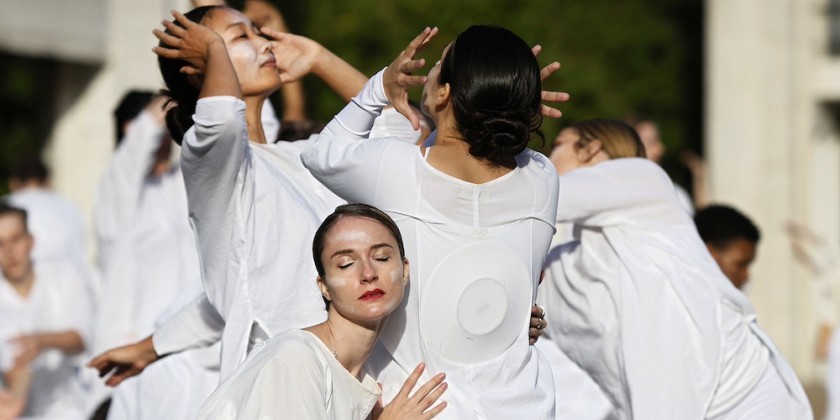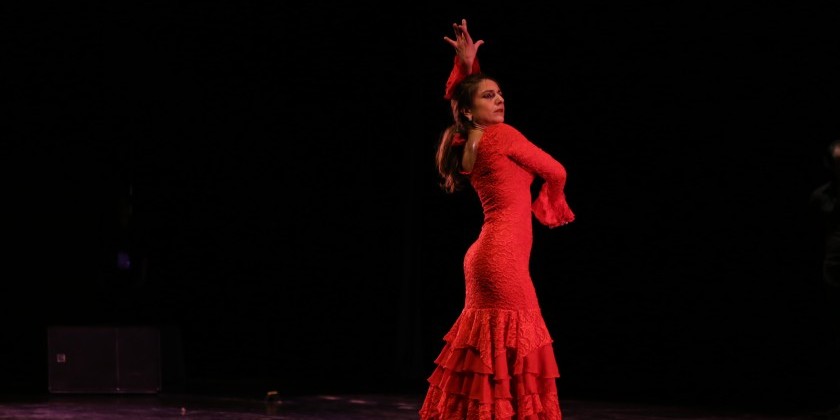DANCE: Dreaming, Connecting, and Flying Into the Future

Some Thoughts on Engagement as Dance/USA's 2011 Annual Conference in Chicago Concludes
"He who would learn to fly one day must first learn to stand and walk and run and climb and dance; one cannot fly into flying." ~Friedrich Nietzsche
©Christine Jowers, 2011 for The Dance Enthusiast
In ye olde days of my girlhood (ah, it goes so fast when you’re having fun and apparently I am having buckets) used to be that it was enough to attend a dance performance to get caught in a whirl of passion for the art. I remember watching Jose Molina Bailes Espanoles, thinking that handsome Jose was rapidly rapping his heels into the floor and carrying his graceful arms and proud as a peacock torso ever upward only to look into my eyes. Imagine (I was a highly romantic nine year old) suddenly, I was engaged with dance performance. Just one look was all it took.
"I also live in a country that sadly can’t afford to dream as much as it once did. We don’t have a space program anymore, for me that is shocking. NASA is gone: We can’t afford it. When I was seven I saw Neil Armstrong walk on the moon on our family’s black –and- white TV: it was thrilling. Space missions, people stretching to fly beyond the bounds of earth have filled my life, but that won’t be the case for the people future (at least as it seems to stand now.) At the very same time that technology affords much choice and exposure to the great beyond, our economic realities impose real limits. Who will teach us to stretch and fly beyond our boundaries now?
Where does the dance of the future fit in to this equation? Can dance provide an outlet for future dreamers and explorers? I believe this leadership position is what our field should aspire to."
Times were different. I grew up somewhat isolated from the formal performing arts in St. Thomas, US Virgin Islands. My entertainment was inventing games to play with my brother and our neighbors, going to the beach, and taking ballet and jazz classes at the St. Thomas School of Dance, home of the Ballet Theatre of the Virgin Islands. Our community rallied around that school. Looking back on childhood, I would say that I was extremely fortunate not to have as many distractions bombarding me as seem to bombard my kids today. I concentrated on school and dance because there was nothing else to do. St. Thomas School of Dance was where I congregated with my friends. Our parents came there. Local businesses put our posters on their doors and advertised their trades in our yearly programs. We entertained tourists and dignitaries. We weren’t connected to everything but we were connected to each other. I was also lucky to be in the right place at the right time -a small American island in the Caribbean, the beneficiary of a great government funded touring program that brought me and my island peers into contact with professional ballet, modern dance, African dance and drums, Shakespeare, and chamber orchestra. We were fortunate to be exposed to big beautiful dreams in a quiet place where we could digest and take them on. We were encouraged to fly. Jose Molina’s mesmerizing rapping was supported by a generous touring grant funded by The National Endowment for The Arts. That kind of money isn’t floating about for the arts in the USA in our recessionary and indebted state.
Today I live in New York City in a world where people aren’t isolated from anything. There is so much opportunity to connect to each other or to entertainment it is dazzling-- sometimes blinding. I also live in a country that sadly can’t afford to dream as much as it once did. We don’t have a space program anymore, for me that is shocking. NASA is gone: We can’t afford it. When I was seven I saw Neil Armstrong walk on the moon on our family’s black –and- white TV: it was thrilling. Space missions, people stretching to fly beyond the bounds of earth have filled my life, but that won’t be the case for the people future (at least as it seems to stand now.) At the very same time that technology affords much choice and exposure to the great beyond, our economic realities impose real limits. Who will teach us to stretch and fly beyond our boundaries now?
Where does the dance of the future fit in to this equation? Can dance provide an outlet for future dreamers and explorers? I believe this leadership position is what our field should aspire to. How does the future- our younger generation- relate to dance? What do they care about? Is dance something important or relevant? How can we design the dance of the future to matter to the people who will make up the future?
In a climate where funding sources are drying up considerably this is an important question. The individual’s artistic experience and the individual’s patronship to dance are more important than ever before. Without passionate people in the audience dance will not survive. Where will our dreams go then? Who will the fliers in our culture be?
In her speech to the conferees of Dance/USA this past July, Patricia Martin, expert on commerce and culture and author of, Renaissance Generation: The Rise of Cultural Consumer and What it Means to Your Business, referred to the TV show Dancing With the Stars. She pointed out that programs like DWTS and So You Think You Can Dance are successful because (more than about dancing) they are about making dreams come true. Audiences can feel included in that. This, according to Martin’s research, is what the new cultural consumer of the Renaissance Generation wants more than anything: to feel included, to authentically be part of the creativity, to have a unique experience, to learn about something larger than themselves, to learn how to fly.
Dancers know how to fly, but for dance to survive it cannot simply be about presenting audiences with our hard won dreams of transcending bounds-- our beautiful performance on a faraway stage. The dance of the future will need to have something to do with welcoming individuals into the experience of our art form. This welcoming, also known as audience engagement, has been and is continuing to be explored in a program administered by Dance/USA which is funded by the Doris Duke Charitable Foundation and The James Irvine Foundation. Dance companies, presenters and educational institutions have been creating and testing programs that offer audiences new access points to dance. The hopes are to encourage spectators to absorb our art form beyond a singular performance and to create deeper more meaningful relationships with companies and artists.
It may sound like a lot of extra work for already overworked dance companies, presenters and educators, but it doesn’t have to be. Martin pointed to a study that she was involved in with The Steppenwolf Theatre Company of Chicago. They were eager to understand the desires of the new generation,wanting their younger audience members to feel included in the theatre's work. They discovered that the simple act of adding Pabst Blue Ribbon to their bars’ menu enabled their younger audience to feel included. Apparently the drinks menu seemed too staid before. Hmmm. This proves what we dancers already know from our studio and stage work — details matter. Changing just one small element in a relationship can make a world of difference.
Coming Soon:
Video and Notes from Chicago Conference on Engaging Audiences
Video and Notes from Chicago Conference on Engaging Audiences













